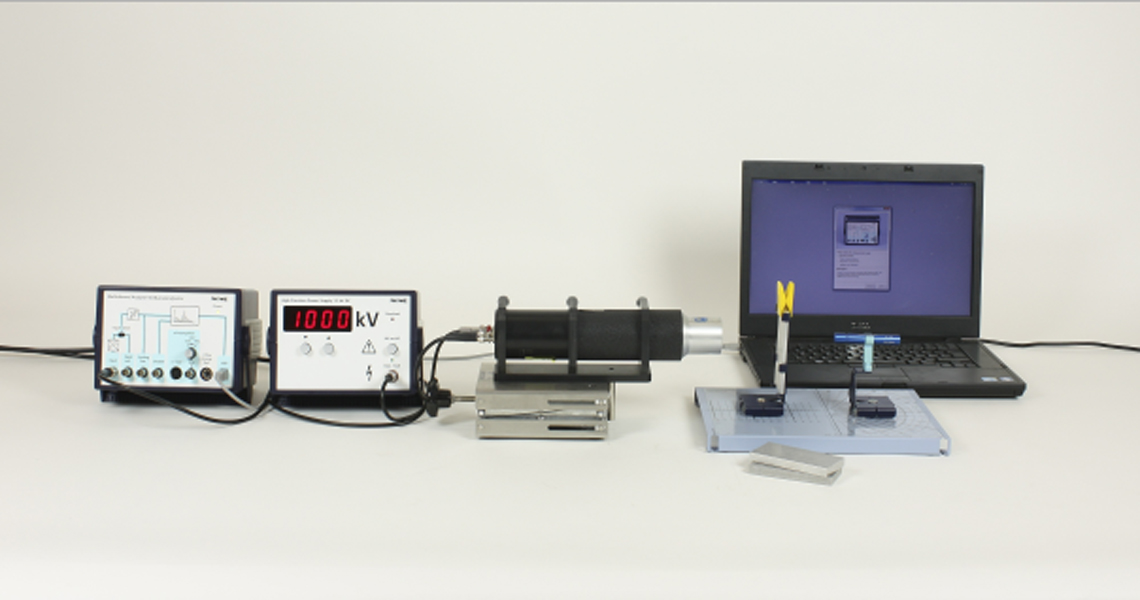Energy dependence of the gamma absorption coefficient / Gamma spectroscopy

The intensity of gamma-radiation decreases when it passes through solid matter. The attenuation can be the result of Compton scattering, the photo effect or the pair production. An absorption coefficient can be attributed to each of the three phenomena. These absorption coefficients, as well as the total absorption, are highly energy-dependent. The energy dependence of the total absorption coefficient for aluminium in the range below 1.3 MeV is verified.
Absorption material, aluminium
Gamma detector
High-voltage connecting cable
Base plate for radioactivity
Source holder on fixing magnet
Plate holder on fixing magnet
PHYWE Multichannel Analyser (MCA)
measure Software multi channel analyser
Lab jack, 160 x 130 mm
Vernier calliper stainless steel 0-160 mm, 1/20
Screened cable, BNC, l = 750 mm
Radioactive source Na-22, 74 kBq
Radioactive source Am-241, 370 kBq
PHYWE high precision power supply 1.5 kV DC
- For each of the emitting isotopes 22Na and 241Am the gamma-spectrum is traced and a threshold energy, E, just below the photo-peak in the high energy range determined.
- Using the scintillation counter in conjunction with the pulse height analyser as a monochromator, the gamma-intensity is measured as a function of the thickness of different aluminium layers.The three gamma- emitting isotopes are used successively as the source, assuming that the energy of the emitted gamma-radiation is known.
- Compton scattering
- Photo effect
- Pair production
- Absorption coefficient
- Radioactive decay
- g-spectroscopy
